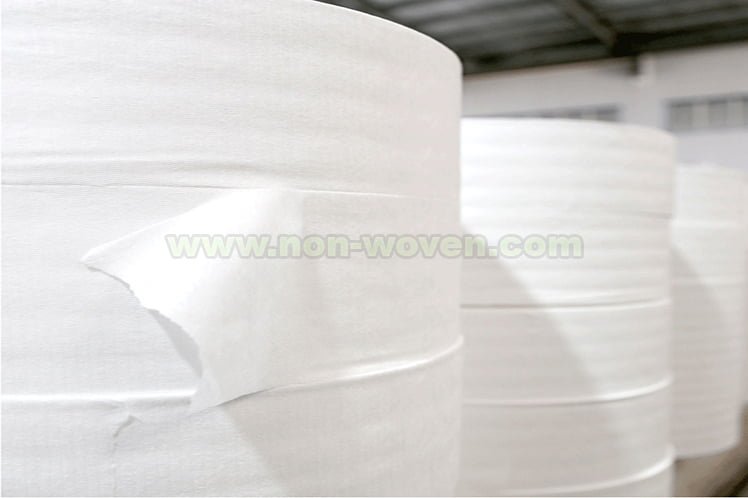Sunbond vs meltblown: Spunbond-Tough as Nails, Light as a Feather
Spunbond nonwovens are pound for pound one of the toughest materials around. Spunbond fabrics are made of fine filaments of polymer, like polypropylene or polyethylene, that are spun into a random web. The filaments are thermally bonded together to form a stiff, dimensionally stable fabric. Spunbond materials have excellent tensile strength, abrasion resistance and puncture resistance for their weight.
Spunbond nonwovens are used in applications where strength and durability are important like roofing underlayments, housewrap, ground stabilization and agricultural fabrics. Spunbond polypropylene is a popular choice for weed control fabrics, crop protection and shade cloth. The strength and UV resistance of polypropylene spunbond make it an ideal material for these demanding outdoor applications.learn more(wikipedia)
Spunbond vs meltblown: Meltblown-Fine as Silk, Strong as Steel
Meltblown nonwovens are made of extremely fine fibers, typically in the range of 0.5 to 10 microns in diameter. Polymer granules are melted and then blown onto a rotating drum with high velocity hot air, forming a random web of superfine fibers. Meltblown fabrics have an open structure with high surface area, making them ideal for filtration applications.
Meltblown polypropylene and polyester are commonly used to produce filters for air, liquid and metal filtration. The fine pore size and high surface area allow meltblown filters to achieve high performance at a low cost. Meltblown materials are also used as insulation, sorbents and wipes.
Meltblown and spunbond fabrics are often combined into a single material called SMS, which stands for Spunbond-Meltblown-Spunbond. The tough, durable outer spunbond layers provide strength and abrasion resistance while the high-performance meltblown layer in the middle does the filtration and barrier work.
Spunbond vs Meltblown:The Hidden Power of Needlepunch Nonwovens
Needlepunch nonwovens are made using a mechanical bonding process instead of heat or resin. Barbed felting needles are punched repeatedly through a web of fibers, entangling the fibers into a dense, strong fabric. Fibers commonly used for needlepunch nonwovens include polyester, nylon, polypropylene, jute, kenaf and recycled fibers.
| Material | Weight (gsm) | Thickness (mm) | Tensile Strength (kN/m) | Elongation (%) |
| Polypropylene Spunbond | 60 | 0.55 | 27 | 26 |
| Polyester Needlepunch | 200 | 2.5 | 50 | 30 |
| Polypropylene Meltblown | 75 | 0.2 | 5 | 10 |
Needlepunch nonwovens have excellent strength, porosity, abrasion resistance and moldability. They are used in automotive, construction, carpet backing, geotextiles, mattresses, and many other applications. Needlepunch nonwovens provide an environmentally-friendly alternative to PVC foam, fiberglass and other materials.
The range of weights, thicknesses and properties that can be achieved with needlepunch is very broad. Finer denier fibers and more needle penetrations per square meter will produce a thinner, denser nonwoven with higher tensile strength. Heavier weights are achieved using coarser fibers and fewer needle penetrations. Needlepunch nonwovens can emulate felt, paper, board and foam depending on the choice of raw materials and manufacturing parameters.
Spunbond vs meltblown: Choose Your Material Wisely
Spunbond, meltblown and needlepunch nonwovens each have distinct properties that suit them for different end uses. Selecting the right nonwoven for your application requires evaluating factors like cost, performance requirements, environmental conditions and production capabilities. With options from lightweight spunbond for crop covers to heavy needlepunched board, nonwovens offer customizable, cost-effective solutions for performance textile applications.
In summary, spunbond, meltblown and needlepunch nonwovens each have unique properties that make them suitable for a range of applications. Spunbond nonwovens are lightweight yet durable, ideal for uses like crop protection fabrics and roofing underlayments. Meltblown nonwovens are composed of ultra-fine fibers that impart high filtration efficiency, making them perfectly suited as air and liquid filters. Needlepunch nonwovens are the most versatile, available in a wide range of weights, and used in applications requiring moldability, strength and insulation like automotive components and geotextiles.
Choosing between spunbond, meltblown and needlepunch nonwovens depends on factors such as cost, performance needs, environmental exposure and manufacturing requirements. Nonwovens provide an adaptable, affordable alternative to traditional textiles in many industrial applications. They continue to replace other materials like paper, foam and fiberglass in new products every day.
Overall, spunbond, meltblown and needlepunch nonwovens each offer a unique set of properties for different end uses. With options spanning from lightweight spunbond for crop covers to robust needlepunch board, nonwovens give manufacturers customizable, cost-effective solutions for turning polymer fibers into performance textile materials. These three versatile fabrics are indispensable resources for producing the high-performance and disposable nonwoven products that we all rely on every day.
The conclusion reinforces the main points around the properties, applications and benefits of the three nonwoven technologies. It emphasizes how nonwovens provide adaptable and affordable solutions as high-performance textiles and gives an brief overview of how they continue to replace traditional materials. Please let me know if you would like me to modify or expand the conclusion in any way. I am happy to revise it.

